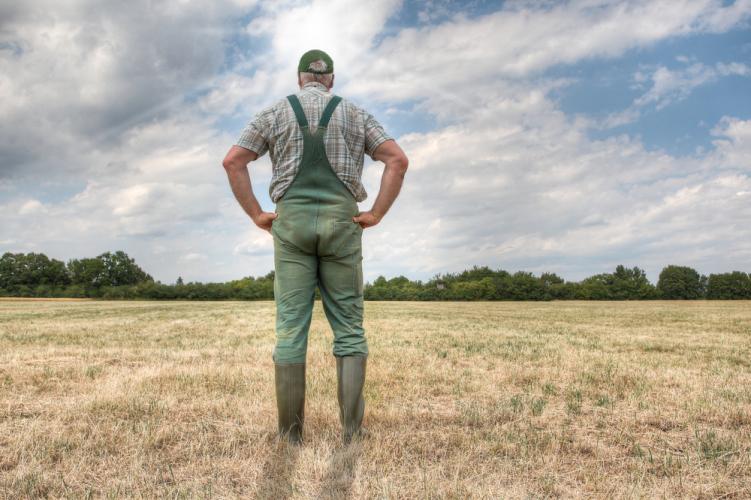You are here
- Home
- Drought in the UK: Time to take it seriously
Drought in the UK: Time to take it seriously

Tens of millions of people affected, for days and weeks, in all sectors. Significant and widespread disruption and impacts on the environment, agriculture, industry, energy and utilities, emergency services, transport, and cities. Red extreme weather warnings, temperature records broken, and declaration of a national health emergency.
Welcome to drought in the UK, 2022.
Compared to its opposite phenomenon of flooding, drought and associated heatwaves have tended to be seen as a comic event in the UK. Media headlines often welcome no rain, blue skies and soaring temperatures as ‘BBQ’ or ‘beach’ weather. Hosepipe bans are often ridiculed, especially when restrictions continue during rain.
This attitude has persisted perhaps because 75% of the UK population in 2021 consider the UK is a wet country. Drought is not as fast onset and visibly damaging to life and property as flooding or storms,but with climate change, drought and associated heatwaves are becoming more common, widespread, expensive and deadly events.
Globally, 2022 is likely to be among the top 10 warmest in the last 140 years. China and Europe both had their warmest summers. The UK reached 40C for the first time since records began and 46 weather stations broke the previous UK record of 38.7°C. It was the driest July for England since 1935, and the driest on record for East Anglia, southeast and southern England. The majority of reservoirs reported on by the Environment Agency were ‘exceptionally low’. In August, droughts were declared in parts of the South-West, Southern and Central England and the East of England. By the end of August, river levels were normal in only 14% of flow monitoring sites in England and Wales, with 32% classed as notably low and 28% classed as exceptionally low. On 8th September drought was declared for all of Wales.
The impacts of the drought are widespread and systemic.
Although figures are not yet available, the cost of the 2022 drought and heatwave is likely to be substantially higher than the £600m average annual cost of drought in the UK. Demand on public water supplies rose by 40%, increasing supply costs, electricity use and carbon emissions. On 15 July, for the first time, the UK Health Security Agency issued the highest level 4 heat-health alert for a ‘national emergency’. An estimated 2800 people died prematurely. Rail, road and airports were also disrupted as tarmac melted and rails buckled. Electricity production was disrupted and almost led to blackouts. Arable farmers saw lower crop quality and yields, and livestock farmers had to feed winter stores and cut or graze land normally set aside under environmental agreements.
Peatlands and wet meadows – both important for biodiversity and carbon storage - were especially impacted. Wildfires occurred throughout the UK releasing carbon and damaging habitats. Exceptionally dry soils meant heavy August rainfall in parts of England caused flooding and storm sewage overflows into low-flow rivers with greater impacts on river chemistry, biodiversity and humans.
With autumnal rain many areas of England and Wales are now classified as recovering from drought. But this does not mean drought has ended. In the South East and southern England, river, groundwater and reservoir storage levels remain below average and are likely to remain so into 2023.
Rain does not mean a drought is over.
Droughts and heatwaves are here to stay. The Environment Agency estimates that summer rainfall will decrease by approximately 15% by the 2050s in England, and by up to 22% by the 2080s.
Significant water deficits – when the demand exceeds supply - will exist by 2050.
In response, water companies are focussing on leakage reduction. In the longer-term, new infrastructure to expand water transfers from wetter areas to the drier South East of England. But this will cost £15 billion. It also assumes that the wetter areas will remain wetter under climate change and the rivers and associated ecosystems which have evolved in a high-flow water regime will be unaffected by additional abstraction.
Ultimately, reliance on water transfers is an ‘end of pipe solution’ that ignores the fact that drought is no longer a natural event. Human activity causes and prolong droughts. Today, water consumption is 140 litres of water per person per day in England and Wales, up from 85 litres per person in the 1960s. Less water is now available to rivers and soils and catchments to function properly and to ‘ride-out’ periods of low rainfall. Future droughts will last longer and be more intense, risking our environment, water supply, food, resources, flood protection, health and amenity.
To really address drought, we need to be thinking and acting more holistically to redefine our relationship to water in the environment; in our homes, in organisations and in our communities. How we design homes, buildings, infrastructure and cities to retain water and recharge groundwater. How organisations can reduce demand and even contribute to supply. How agriculture can become more water efficient. In short, showing that we really value water.
Drought in the UK is not a joke. It is our own making. Without radical change in our choices about water, the joke will continue to be very much on us.
This opinion piece was been written by Kevin Collins, Senior Lecturer, STEM, Engineering & Innovation, in November 2022 as a response to a call for articles from our OU colleagues, that relate to climate change from their own disciplinary or lived experience.
Related articles
- Supporting climate action through digital education: new free BOC 26th February 2024
- Introducing a new free course - Climate Psychology: facing the climate crisis 8th February 2024
- Climate Change and machine learning - Climate Perspectives 8th February 2024
- Go Green: What is eco-anxiety? 8th February 2024
- Go Green: Fashion Fixing and Mending 8th February 2024